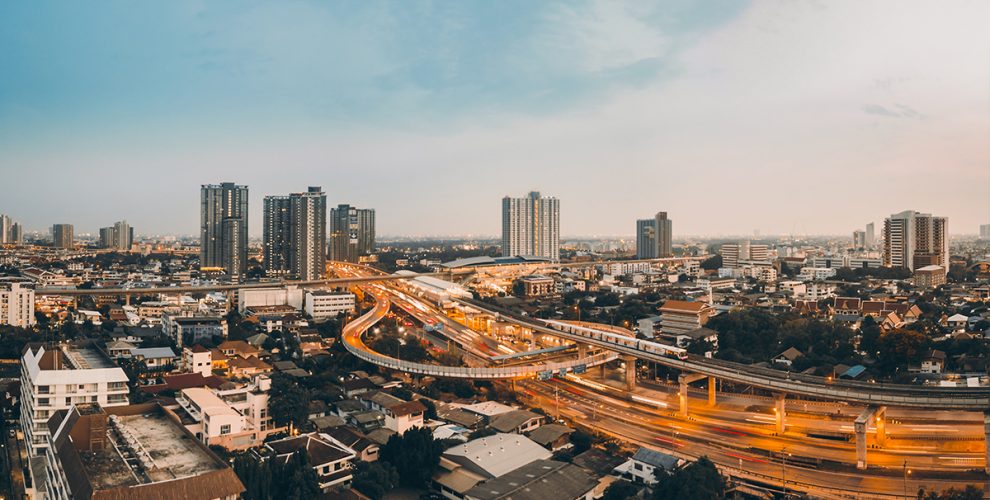In a “smart city,” people receive and experience efficient urban mobility, cheap housing, extensive IT connectivity and digitization, and effective governance, which are the main priorities with the applications of smart solutions.
The primary goal of a smart city is to use smart technologies and data analysis to implement information and communication technology for the benefit of its citizens. The goal of a smart city can only be achieved if individuals know how to use it, not just because the technology is there.
Let’s talk about the different smart city technologies that will make it easier for systems and sensors to talk to each other, which will make it easier to redistribute resources and improve the welfare of citizens.
Role of Information and Communication Technology in Smart City
Information and communication technology (ICT) is the combination of computer systems, phone lines, and multimedia networks over a single set of wires or links.
Information and communication technology (ICT) is a powerful weapon that may empower individuals by distributing information and encouraging social inclusion. ICT is utilised in the smart city to improve the functionality, effectiveness, and interactivity of municipal services, to cut costs and resource usage, and to boost communication between people and urban officials.
Students can learn about the most up-to-date SMART technologies if they plan to enrol in the top college for B.Tech Artifical Intelligence in Coimbatore that encourages innovation and technological exploration.
FIVE Automation Technologies for Smart Cities:
A brief explanation of five smart city automation technologies follows.
Internet of Things
The term “Internet of Things” (IoT) refers to a network of physical items, or “things,” that are connected to and exchange data with other systems and devices over the Internet. These “things” are embedded with sensors, software, and other technologies.
IoT sensors and cameras have the ability to continuously gather specific information in a variety of ways and on a real – time. Using various IoT sensor types, real-time data may be gathered on things like foot traffic at a railway station, traffic on a road, the level of contaminants in a water source, and the energy usage in a residential building. As a result, IoT networks and sensors will act as the nervous system of smart cities, transmitting important information to the organizations in charge of them and sending directives to the relevant terminals in response.
Artificial Intelligence
Artificial intelligence and big data are related. AI is the use of a non-human machine to mimic intelligent human behaviour and learn from experience. Big data can be easily shifted by AI to produce predictions and affordable solutions that power smart city technologies. Smart cities use AI in the following ways:
- Establishing fresh connections for gas, electricity, and water.
- Changing ownership information.
- Altering the registered address and other information in government documents.
- Transportation officials employ AI applications of computer vision to spot vehicles that are linked to crimes and determine if drivers are parking unlawfully.
The fact is that artificial intelligence is the future for upcoming generations, and most of the Top IT College in Coimbatore and other cities in India have begun to educate and explore more about the innovations that AI can perform in the future.
5G connectivity
The fifth generation (5G) of wireless networks features minimal latency, high data speeds, huge connectivity, and large bandwidth. Greater file transmission speed and immediate access to any remote apps are the advantages of 5G connectivity. The second factor is latency, which is the amount of time that passes between placing an order on a device and the action taking place. Due to low latency and more sensors, it is now possible to control machines and do surgery from a distance.
The basis of smart cities is their divisions’ capacity for real-time communication and information sharing to guarantee total operational sync. The applications of 5G connections are:
- Healthcare
- Transportation
- Agriculture
- Energy management
Not to mention the educational institutions in India such as Coimbatore colleges and universities that have upgraded the learning system through SMART classes.
Big Data Analytics
Big data analytics is the act of spotting patterns, trends, and correlations in vast quantities of unprocessed data in order to support data-driven decision-making. Big data analytics can help cut costs and find better ways to run a business. It can also help create products that meet customer needs and keep track of buying habits and industry trends.
Public transportation uses big data analytics to better understand how people move around the city. If transportation companies knew more about how people use their services, they might be better able to judge how good they are.
Augmented Reality
First of all, augmented reality is an interactive experience that combines real-world settings with digitally produced content. Information that is available in real time in the form of text, pictures, music, and other virtual features.
The applications of augmented reality in smart cities are:
- Information about parking penalties and stolen vehicles is important to traffic management officials.
- Repairing a damaged railway line by emphasising the track configuration and precise location of the affected area.
- Surgeon at a public health facility.
These days, augmented reality and virtual reality (VR) help with prototyping, designing, marketing, and customer support. The metaverse’s evolution will anticipate that augmented and mixed reality advancements will become more practical for individuals in their daily lives. AR functions by placing digital data on the real-world environment. Urban mobility, public safety, public health, and tourism are all enhanced by AR and become more focused on people.


